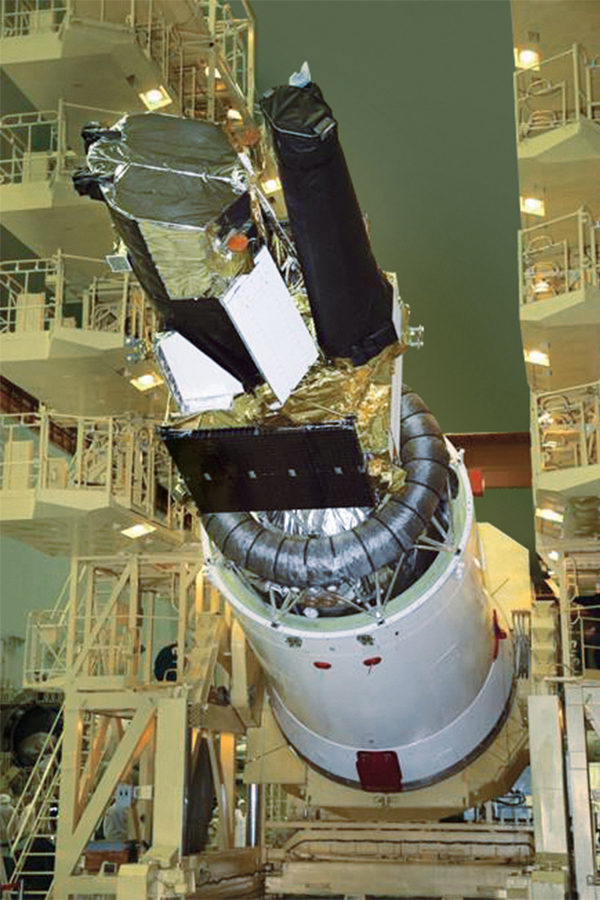Two HPS contributions on board the Transporter 12 mission on January 14, 2025
Even HPS has never done this before: two of the company’s products are on their way to a sun-synchronous orbit on a Falcon 9 mission. This has been made possible by the rideshare- version of the SpaceX rocket named “Transporter 12”.
On the one hand, the contributions from HPS relate to the highly innovative BANT-1 reflector antenna for Reflex Aerospace’s premiere satellite – see also the HPS news item “HPS congratulates Reflex Aerospace” from today, January 14.
On the other hand, a contribution from HPS itself is the premiere. For the first time, HPS Germany and HPS Romania have jointly prepared a flight hardware with the MLI insulation of the central radiator in such a way that the thermo-optical properties of the satellite are maintained even under the most adverse conditions in space.
The satellite is Sky Bee-1 and part of a thermal infrared constellation HiVE that provides highly accurate yet cost-effective daily temperature data of the world’s land surfaces with a resolution of 30 meters for the benefit of agriculture, urban and industrial environments. The HPS teams of both European countries warmly congratulate their client OHB on the launch success. The first flight model SkyBee-1 is being developed under the InCubed Programme, co-funded by the European Space Agency.

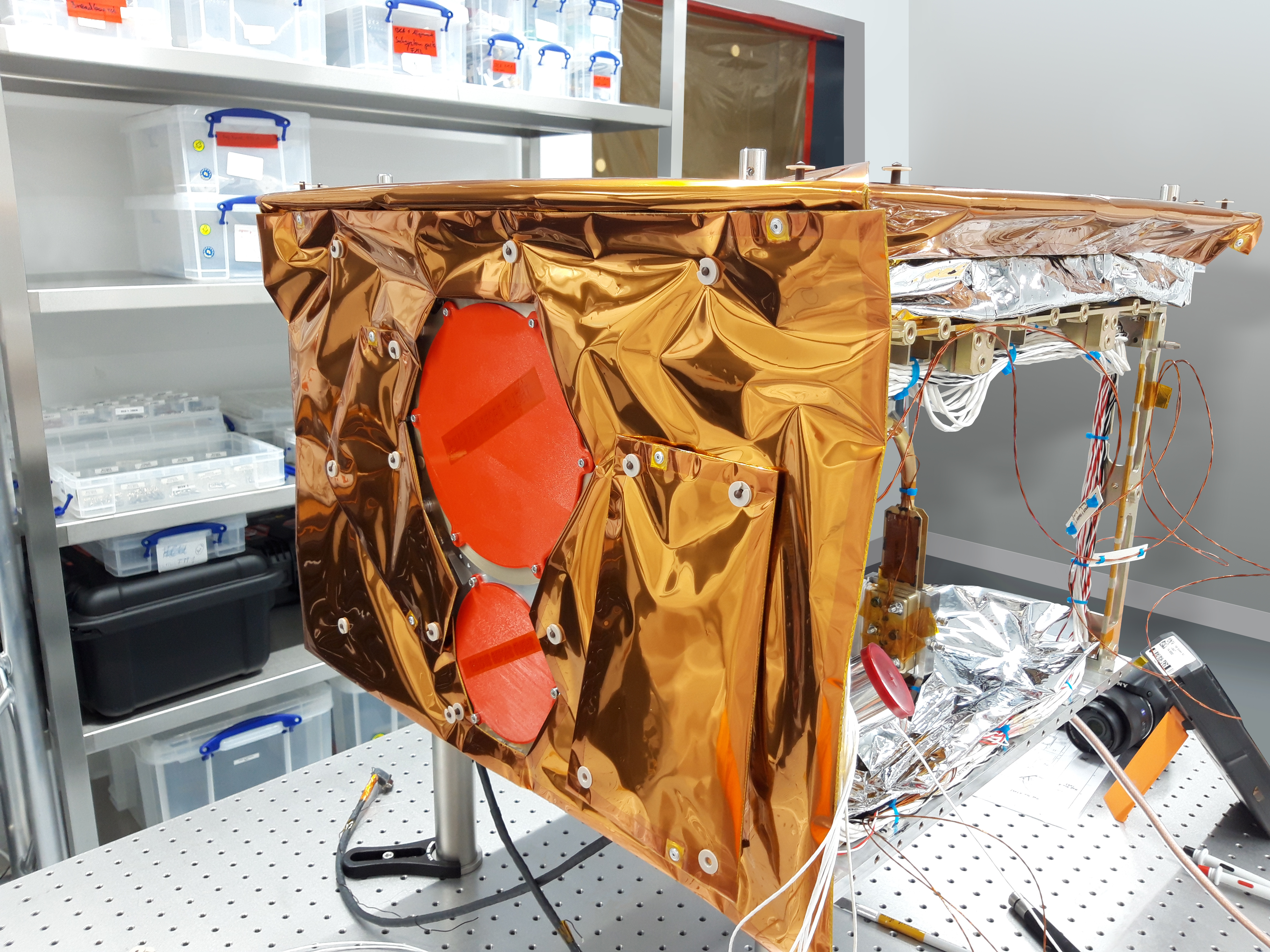
Oktober 2024
HPS Prominently Present at the IAC in Milano
Participating in the International Astronautical Congress, IAC, has developed into a good tradition at HPS over many years. This year, the company will be represented by Ernst K. Pfeiffer, CEO, together with ADEO project manager Mrs. Dorittya Milankowitch from HPS Munich and Horatiu Gheorghe as IAC-contact point for HPS Bucharest with products like secondary structures, thermal hardware and purging equipment. The HPS-team will keep up full presence during all five days of this international event.
Special highlights will be the company presentations; they are going to take place on Friday, 18th, from 10.15 to 10.45 a.m., and also as part of the Company Slam at the booth of the German association BDLI on Tuesday from 13.15 to 13.45 p.m..
Focus of both presentations will be on the product family of the ADEO deorbit sailsystem for automatic disposal of satellites after their end of mission, serving the idea of clean space, sustainability and debris avoidance even from the beginning of the satellite´s journey.
Main products besides ADEO to be asked at our booth: reflector antennas, deployable antennas, large deployable reflector subsystems, mesh, thermal hardware, purging equipment. HPS will warmly welcome there all its customers from both worlds: classic and NewSpace. For a dedicated prearranged business meeting please send a message to Contact@hps-gmbh.com.

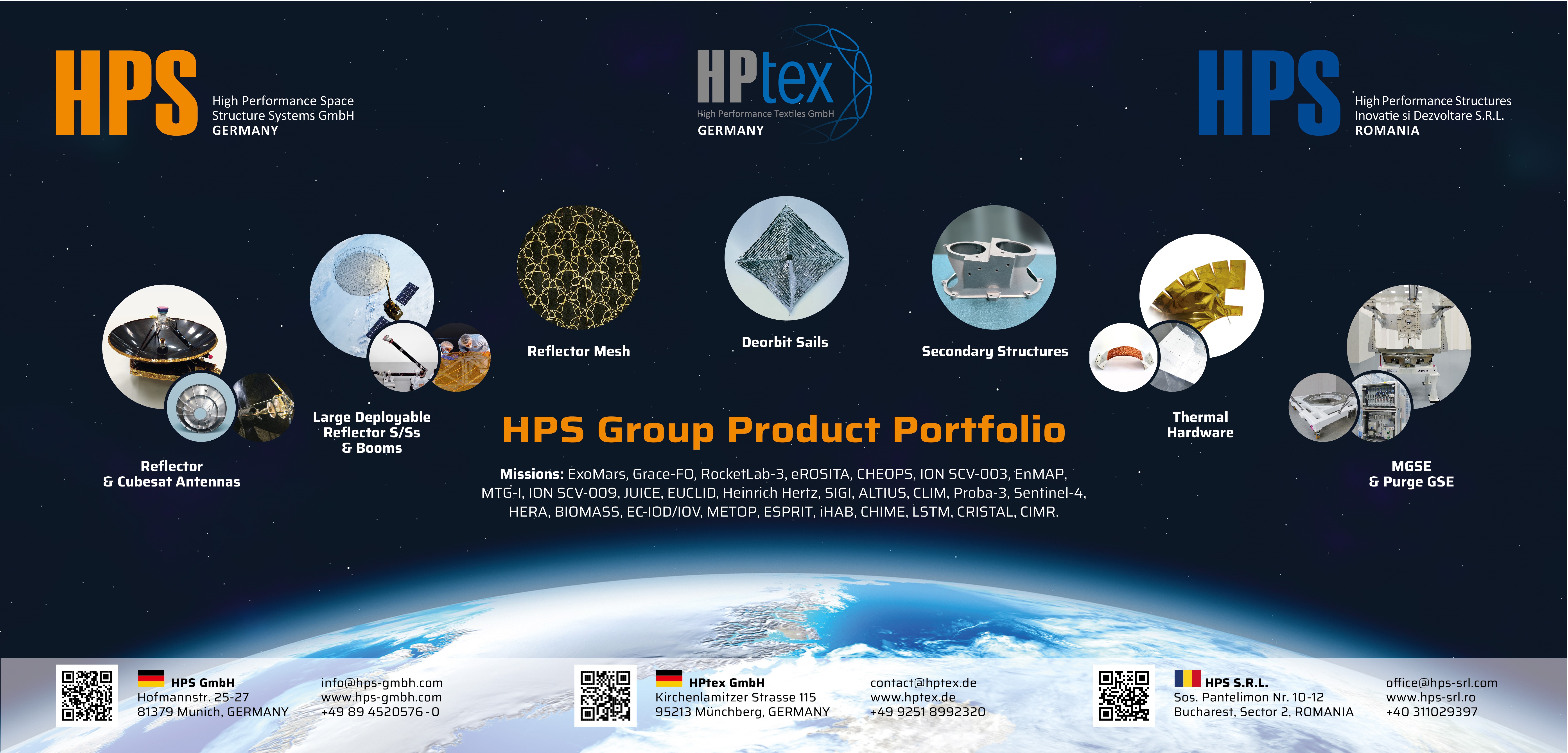
December 2012
Im Weltraum ist es kalt – und heiß. Satelliten, die beispielsweise aus 36.000 Kilometern Höhe über der Erde ihre Fernsehprogramme abstrahlen, sind auf der Sonnenseite Temperaturen von plus 120 Grad ausgesetzt, während auf der anderen Seite die Kälte des Alls mit minus 170 Grad an ihnen nagt. Ausgeglichen wird diese Differenz durch eine maßgefertigte weltraumtaugliche „Daunenjacke“, den Thermalschutz (im Fachjargon: MLI, Multi-Layer-Insulation).
Allein etwa eintausend kommerzielle Satelliten im Wert von über dreihundert Milliarden Euro sorgen weltweit für Telefon-, TV- und Datenübertragung. Dazu kommt noch eine Vielzahl von wissenschaftlichen Satelliten, die in die Ferne spähen oder die Erde beobachten. Für ihre angemessene „Bekleidung“ und damit Funktionsfähigkeit sorgte in Europa bislang vornehmlich ein großer Hersteller aus Österreich, dessen Marktherrschaft seit neuestem die kleine Münchner Raumfahrtschmiede HPS mit deutlich niedrigeren Kosten bei zertifizierter gleicher Qualität attackiert. Das Rezept: Die Forschungs- und Entwicklungszentrale in Deutschland hat nach fünf Jahren Vorbereitung ihre Tochtergesellschaft in Porto zum Produktionsstandort qualifiziert und ausgebaut; Die Entwicklung der Schnittmuster, Nähverfahren und Halterungen wird durch Spezialisten hauptsächlich in Deutschland durchgeführt.
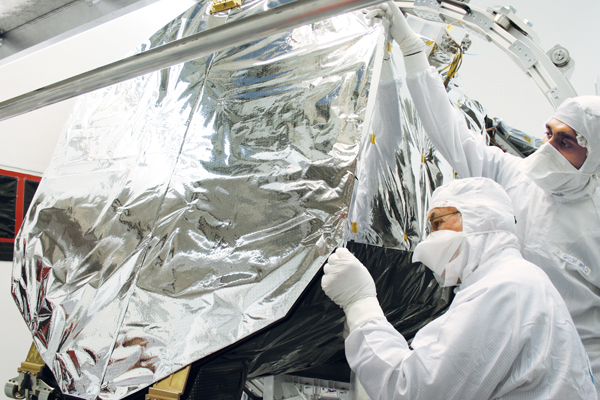
In den vergangenen Wochen wurden die letzten Maßanfertigungen des Thermalschutzes für das drei Meter hohe Weltraumteleskop „eROSITA“ des Max-Planck-Instituts für extraterrestrische Physik in Garching bei München angelegt: Insgesamt rund 80 unterschiedliche Kleidungsstücke mussten für die hochgenaue Struktur entwickelt werden. Das Teleskop wird ab 2014 an Bord des „Spektrum-Röntgen-Gamma“ – Satelliten erstmals den gesamten Himmel auf der Jagd nach „Dunkler Materie“ kartographieren. „Das eROSITA-MLI ist der bisherige Höhepunkt unserer erfolgreichen Entwicklung und Fertigung. Im Oktober haben wir zudem gerade eine Garderobe aus ca. 120 Teilen für das Landungsraumschiff der kommenden ESA-Mission zum Mars begonnen, und für rund ein halbes Dutzend weitere Satelliten-Thermoanzüge erwarten wir den Zuschlag. Daneben sehen wir unser Potential auch in unzähligen kleineren Aufträgen für Satelliten-Unterlieferanten, die vom Marktführer bisher aus unserer Beobachtung nicht optimal bedient werden. Unser Angebot bietet nicht nur den Kunden eine Alternative zum bestehenden ´Monopol´; es zeigt auch, welche Chancen in Europa für grenzüberschreitende Unternehmungen gerade im Hochtechnologie-Bereich Raumfahrt bestehen. Die derzeit zwölf Arbeitsplätze im krisengeschüttelten Portugal sind sicher, fünf bis zehn weitere kommen bald hinzu; in Deutschland werden wir parallel von 30 auf 50 Mitarbeiter wachsen“, so der HPS-Chef und Raumfahrtingenieur Dr. Ernst K. Pfeiffer. Kunden sind neben der europäischen Raumfahrtagentur ESA (Paris) und der deutschen Raumfahrtagentur DLR (Bonn) Unternehmen wie die OHB-Tochter Kayser-Threde (München), ThalesAleniaSpace Italia (Turin) und das Max-Planck Institut für extraterrestrische Physik (Garching).
July 2013
On July 25th the satellite Alphasat was successfully launched by an Ariane 5 launcher. This means, the first HPS and Portuguese multilayer thermal insulation (MLI) was also launched to space. The MLI being on orbit it is also a flight premiere for the whole HPS family. Currently, HPS is designing the MLI for the European Exomars mission.
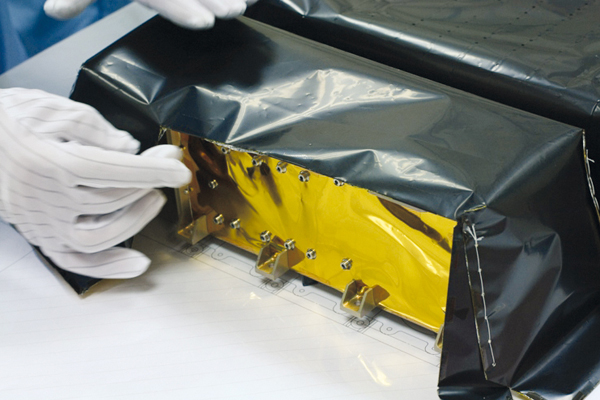
July 2015
In January 2016, ESA launches the space mission ExoMars on its way to Mars. Arriving 9 months later in the Mars Orbit, the “Entry, Descent and Landing Module” (EDM) will separate from the mother ship and will land on the surface of Mars.
HPS Group received the contract for the complete Multilayer Insulation for the EDM-Lander in 2012. All internal and external blankets, ranging from tank-MLI, high temperature thruster MLI, standard tube MLI up to TPS-attached MLI, have been developed and manufactured by HPS Portugal until beginning 2015.
In plenty different integration campaigns during day and night, on site of the Customer ThalesAleniaSpace, Italy, HPS successfully attached more than 150 sheets directly on the flight hardware.
In April 2015 the whole spacecraft has been vibration tested under control of ESA.
And now, in July, HPS finalized its service with the last MLI AIT activities.
All HPS staff is proud to fly to Mars soon and thanks its Customers TAS-I and ESA for their trust in our capabilities.
For Further information on the ExoMars Mission, please click here: http://exploration.esa.int/mars/46124-mission-overview/
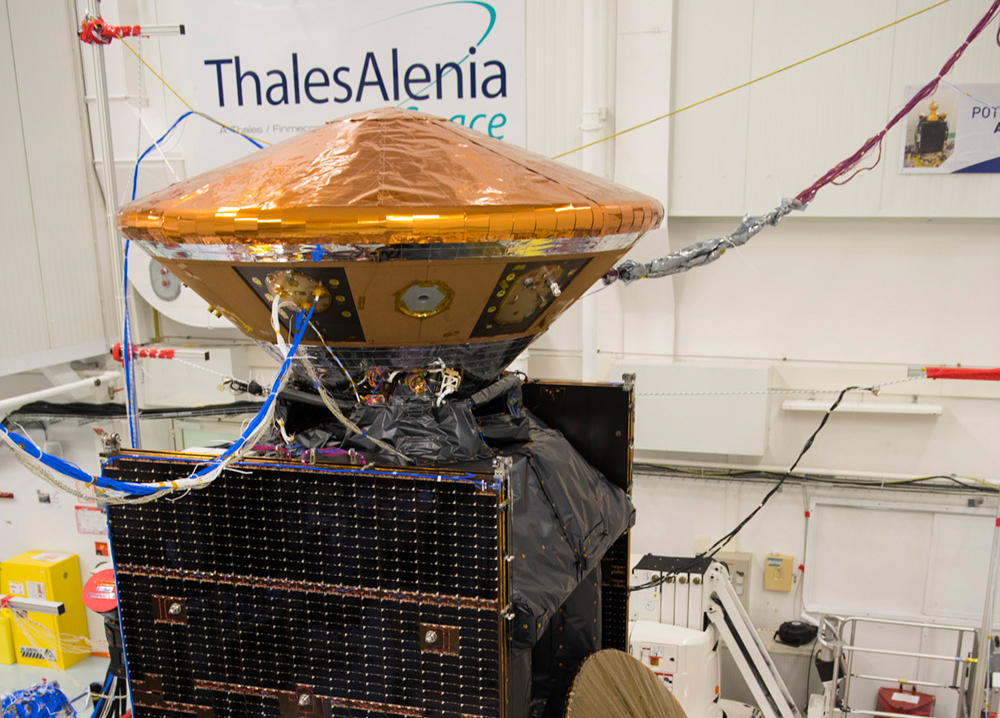
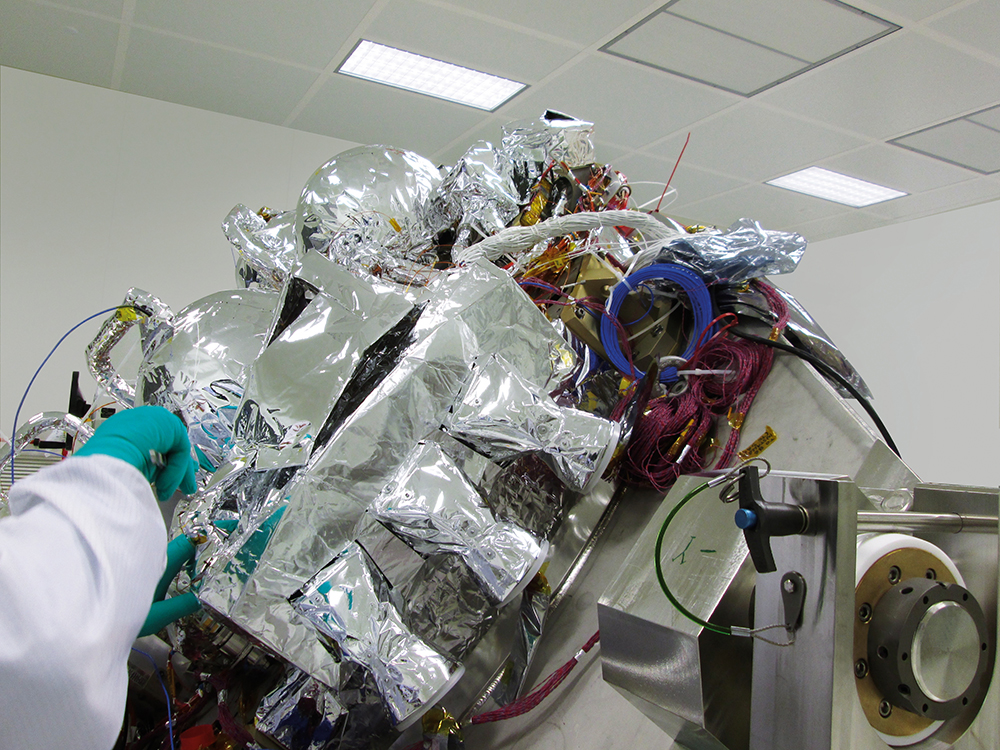
December 2015
Critical Thermal Protection made by Europe´s MLI-expert HPS in Portugal and Germany
Scientists, media and other VIP´s from Europe´s space sector took the last chance on November 25th in Cannes to have a look at ESA´s latest exploration technology before it lands on Mars in October, 2016: Schiaparelli – an entry, descent and landing demonstrator module – is a technology-testing vehicle carried by the ExoMars Trace Gas Orbiter to demonstrate the capability of European industry to perform a controlled landing on the surface of Mars. The preparation for this mission enhances Europe’s expertise and enables the testing of key technologies which could be used in subsequent missions to Mars.
Although designed to demonstrate entry, descent and landing technologies, Schiaparelli offers a science package that will operate on the surface of Mars for a short duration after landing, planned to last approximately 2-4 sols (martian days).
Schiaparelli will be protected during its decend to Mars at a speed of 21,000 km/h as well as during its operations on the surface against all thermal impacts by a multilayer insulation designed, developed and manufactured by the Portugese space company HPS Lda.
„Thermal protection is one of the critical components that decide about success or failure of any space mission. However, with Schiaparelli it opens yet another dimension of human space exploration, since this spacecraft has the task to verify technologies for the generations of unmanned and finally human missions to land on Mars in future,“ said Ernst K. Pfeiffer, CEO of HPS. „In addition, my teams in Germany and Portugal have developed also the thermal protection for this mission´s scientific instruments CASSIS and NOMAD. All HPS employees in Germany and Portugal are extremely proud to serve as Europe´s selected thermal protection specialists in space, to have soon more than 10kg hardware on Martian surface and to play with this a vital part in man´s historic pathfinding mission to other planets.“
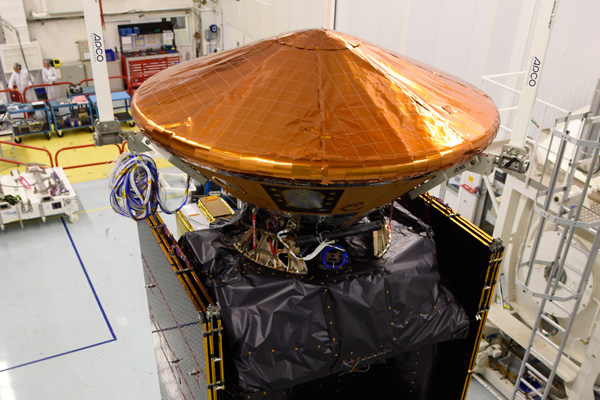
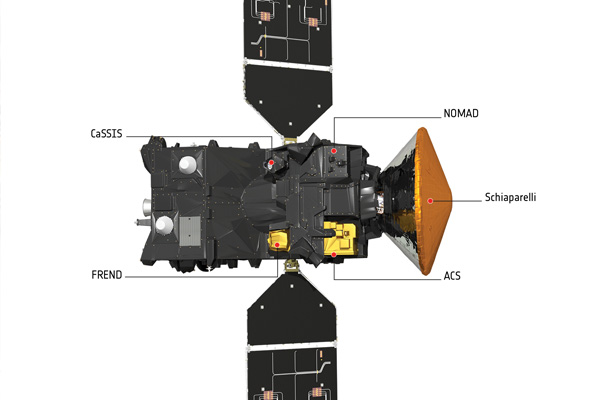
March 2016
To reach and land on Mars in 5,296 hours
Guarded by its Multilayer Insulation made by HPS Portugal the European landing demonstrator Schiaparelli will reach and enter the hostile Martian atmosphere at a speed of 21,000 km/h by October 19th this year, after 269 days or 5,296 hours of flight through the galaxy after a perfect launch on March 14th.
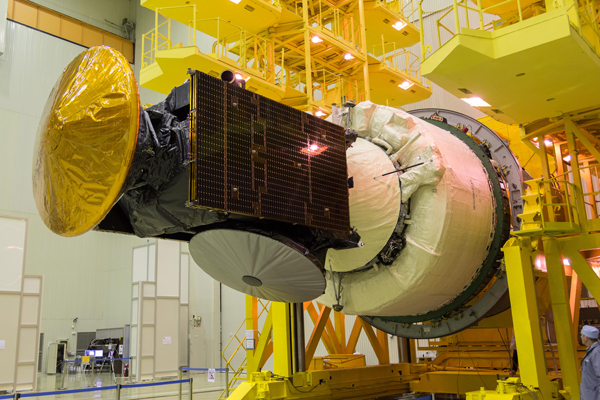
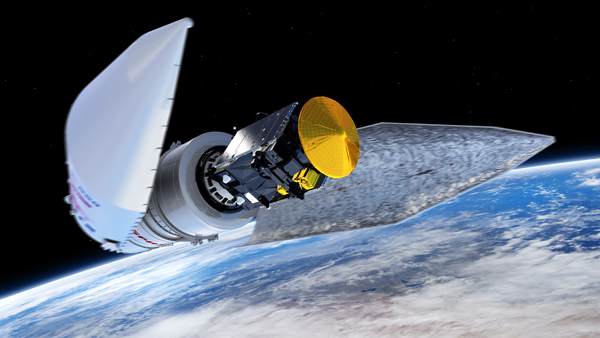
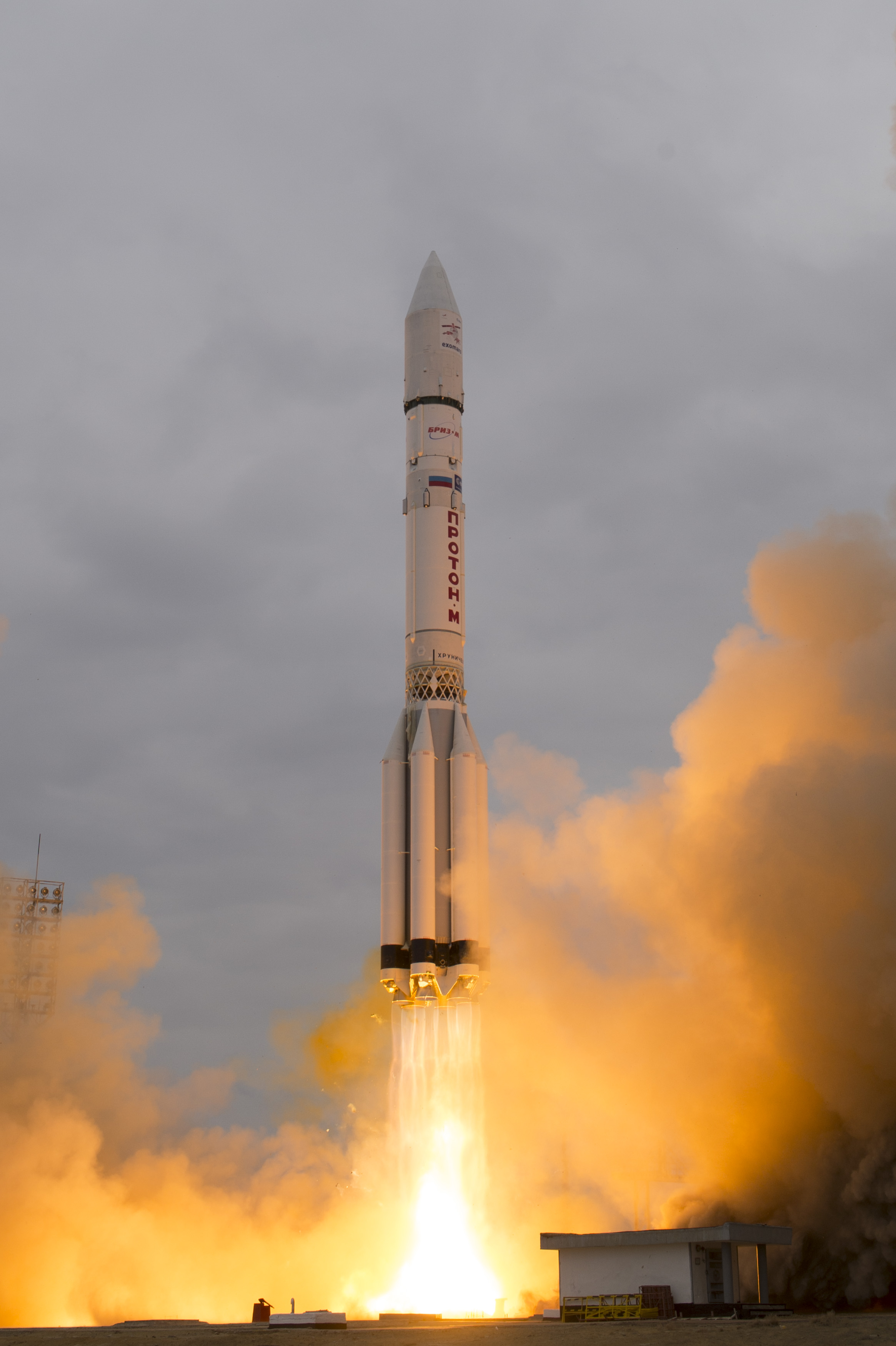
July 2019
Das deutsche Röntgenteleskop, entwickelt vom MPE (Max-Planck-Institut für extraterrestrische Physik) in Garching, „eROSITA“ ist zusammen mit einem russischen Instrument am 13. Juli 2019 um 14:31 Uhr mitteleuropäischer Sommerzeit (17:31 Uhr Ortszeit) erfolgreich vom Raketenbahnhof in Baikonur gestartet.
Zurzeit befindet es sich auf dem Weg zum 2ten „Lagrange Punkt“ (L2), 1.5 Millionen Kilometer von der Erde entfernt.
Am L2 angekommen wird eROSITA alle sechs Monate den gesamten Himmel abtasten und so eine exakte Karte vom Universum im Röntgenbereich erstellen. Die Daten werden genutzt um die „Hotspots“ des Universums zu kartieren; Supernovas, Neutronensterne und schwarze Löcher stehen ganz oben auf der Liste.
eRosita kann überdies von den Bewegungen der Galaxien, Rückschlüsse auf die Dunkle Energie schließen. Jene unbekannte „dunkle“ Kraft, die das Universum expandieren lässt.
Alle elektromagnetischen Wellen, wobei die Röntgenstrahlung ein Teil davon ist, breiten sich mit Lichtgeschwindigkeit aus. Das Licht ist schon Millionen oder sogar Milliarden Jahre unterwegs wenn es die Detektoren von eRosita einfangen. Darum ist der Blick in den Himmel auch immer ein Blick in die Vergangenheit.
HPS hat von 2010 bis 2016 das MPE bezüglich Thermal Schutz-Design durch MLI (Multi-Layer-Insulation) für eROSITA begleitet. Auslegung, Fertigung und Integration wurden für zwei Modelle QM (Qualifikations-Model) und PFM (Proto-Flight-Model) durchgeführt.
Es befindet sich insgesamt 14 kg High-Tech-Folien Material (MLI) auf dem Teleskop. Ausgebreitet würden die Folien eine Fläche von über 500m² ergeben, was in etwa einem Basketballfeld entspricht.
Nach der langen und äußerst guten Zusammenarbeit freut sich das HPS Team mit dem MPE sehr über den geglückten Start des eROSITA Röntgen-Teleskopes.
